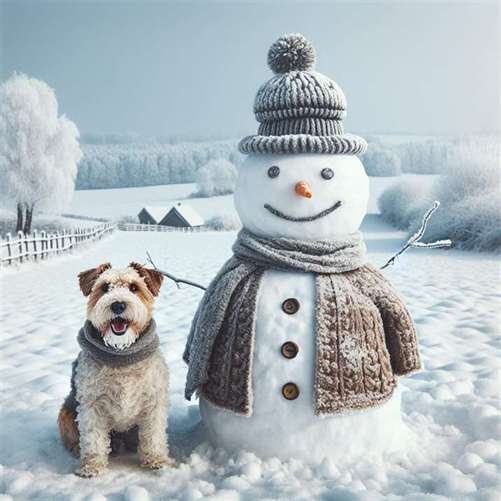Dog Shedding in Winter: 5 Top Reasons
Introduction
If you’re a pet owner, especially a dog lover, you may have noticed that your furry friend sheds more fur during the winter months. Understanding dog shedding in winter is essential for maintaining your dog’s health and keeping your home clean. This phenomenon is not merely a nuisance; it stems from biological and environmental factors that affect your dog’s coat and overall well-being. In this article, we delve into the reasons behind this seasonal shedding and share tips to manage it effectively.
Recent studies highlight how seasonal changes can significantly influence dog fur and pet care. As temperatures drop, many dogs go through a process of losing their summer coats, making way for warmer winter fur. However, the shedding process can vary greatly by breed and individual health. Understanding these patterns can help you better care for your dog and prepare for the seasonal transitions they experience.
In this article, we will explore the five top reasons why dogs shed in winter. Knowing these reasons can empower pet owners by allowing them to manage their dog’s shedding more effectively. From changes in temperature to dietary factors, we will cover it all. So, let’s dive in and discover why your beloved pet may be leaving a trail of fur behind as they navigate the cold months.
For effective strategies to manage your dog’s coat, check out our article on dog grooming essentials.
What is Dog Shedding in Winter: 5 Top Reasons?
Understanding Dog Shedding in Winter
Dog shedding in winter refers to the process where dogs lose their hair during the colder months. This biological phenomenon is driven by several factors, including changes in daylight, temperature, and humidity. As dogs adapt to their environment, their coats naturally thin out or become denser to protect against the cold.
Historical Context
Historically, dogs have evolved alongside humans, adapting to various climates and living conditions. The grooming practices we see today are a result of this evolution. In ancient times, dogs with thick coats were favored in colder climates, while those with lighter fur were preferred in warmer regions. These evolutionary traits have influenced how we perceive dog grooming and dog shedding in winter today.
The Importance of Dog Shedding in Winter
Understanding why your dog sheds during winter is crucial not just for aesthetic reasons but also for their health. Shedding is a natural process that allows dogs to rid themselves of old, dead fur and makes way for a healthier, functional coat. This shedding can also help regulate body temperature and reduce the risk of skin problems.
Dog Shedding in Winter in the Context of Pet Care
From a pet care perspective, knowing the reasons behind seasonal shedding can help you select appropriate grooming tools and products. Regular brushing becomes essential to manage loose fur and prevent matting, especially for breeds with longer coats. Products like de-shedding tools and specialized shampoos can make a significant difference during this time.
Key Players or Contributors
Several organizations have researched the impacts of shedding on dog health and pet ownership. The American Kennel Club (AKC) and various veterinary associations provide valuable resources on understanding dog behavior and health during shedding periods.
For additional insights, learn more about seasonal coat changes in dogs.
How Does Dog Shedding in Winter: 5 Top Reasons Work?
The Mechanics of Dog Shedding in Winter
Understanding the mechanics behind dog shedding in winter can help you appreciate the complexity of this natural process. Shedding is controlled by various hormones, primarily influenced by light exposure and temperature changes. As winter approaches and daylight hours decrease, dogs may begin to shed their summer coats in preparation for their thicker winter fur.
1. Seasonal Changes and Hormonal Fluctuations
The primary reason for increased shedding in winter is the change in daylight hours, which triggers hormonal responses in dogs. As the days shorten, the production of melatonin increases. This hormone signals the body to prepare for colder weather, prompting dogs to shed their lighter summer coats.
2. Temperature Regulation
Dogs are equipped with a natural ability to regulate their body temperature through their fur. As winter brings colder temperatures, many dogs shed their summer coat to make way for a thicker, warmer undercoat. This transition is essential for maintaining their comfort and health during the chilly months.
3. Humidity and Indoor Heating
Winter often brings changes in humidity levels, especially indoors. Many pet owners rely on heating systems to keep their homes warm, which can lead to dry air. This dry environment can irritate your dog’s skin and result in increased shedding. Ensuring proper humidity levels in your home can help combat this issue.
4. Diet and Nutrition
Another significant factor influencing shedding is diet. A balanced diet rich in essential fatty acids can help maintain a healthy coat. If your dog is not getting the right nutrients, they may experience excessive shedding. Consider incorporating foods rich in Omega-3 and Omega-6 fatty acids to support skin health.
5. Health Issues
Lastly, underlying health issues can also contribute to abnormal shedding patterns. Conditions such as allergies, skin infections, and hormonal imbalances can lead to excessive fur loss. Regular veterinary check-ups can help identify and address any health concerns your dog may face during the winter months.


Tips to Manage Dog Shedding in Winter
Now that we’ve covered the reasons behind dog shedding in winter, let’s explore some practical tips to manage this process effectively.
Regular Grooming
- Brush Frequently: Regular brushing helps remove loose fur and reduces the amount of hair that ends up on your furniture and floors. Aim to brush your dog at least once a week during winter, more often for heavy shedders.
- Choose the Right Tools: Invest in high-quality grooming tools like de-shedding brushes or grooming gloves designed to handle your dog’s specific coat type.
Maintain a Healthy Diet
- Balanced Nutrition: Ensure your dog is receiving a balanced diet that supports coat health. Consult your veterinarian for recommendations on the best food for your dog’s breed and age.
- Consider Supplements: If your dog’s diet lacks essential fatty acids, consider adding supplements to promote a healthy coat. Always consult your vet before introducing new supplements.
Hydration
- Encourage Water Intake: Keeping your dog well-hydrated is crucial during the winter months. Dehydration can lead to dry skin and increased shedding. Ensure fresh water is always available.
Create a Comfortable Environment
- Humidity Control: Use a humidifier in your home to maintain optimal humidity levels. This can help prevent dry skin and excessive shedding.
- Comfortable Sleeping Areas: Provide your dog with a cozy, warm place to sleep that is away from drafts and chilling temperatures.
Regular Vet Check-ups
- Monitor Health: Regular vet visits are essential to ensure your dog’s overall health. Discuss any noticeable changes in shedding patterns with your veterinarian, as they can indicate underlying health issues.
Conclusion
Understanding dog shedding in winter is vital for every responsible pet owner. By recognizing the reasons behind this natural process, you can take proactive steps to manage it effectively. Regular grooming, a balanced diet, and a comfortable living environment are just a few ways you can support your dog through this seasonal change.
With the right care, you can ensure your dog remains healthy and happy, even as they lose their winter coat. Remember, shedding is a normal part of your dog’s life, and by staying informed, you can make this process easier for both you and your furry friend.
For more insights into pet care and to discover tips on managing your dog’s health throughout the seasons, visit our pet care blog.
By being proactive and informed, you can continue to be the best pet parent possible, ensuring your dog thrives during the winter months and beyond.
Resource Links:
- iandloveandyou.com: … Hair goes through phases of growth and shedding; dead hairs are shed to make room for fresh, new growth. We cover the top 5 reasons dogs shed …
- bil-jac.com: … All Posts. 1/5 … Starting to wonder what’s going on with your best friend’s winter coat? Let’s examine some reasons why your dog is shedding …
- reddit.com: … They grow the winter coat and the shedding begins a d never stops. … Looks normal to me…for a 5 minute brushing session during shed season 😛 …




0 Comments